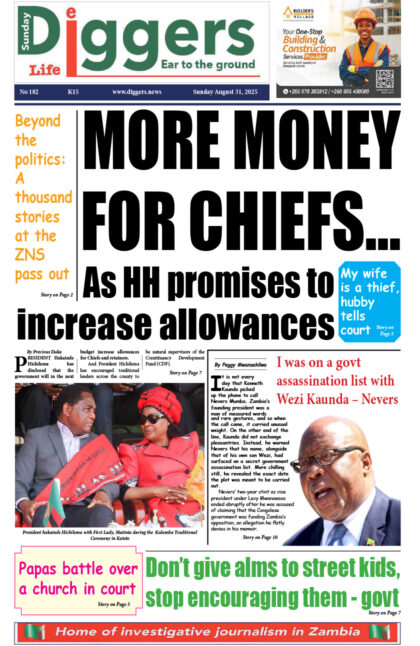Fitch Ratings has affirmed Zambia’s credit rating at ‘B’, but with a negative economic outlook, mainly triggered by continued uncertainty about the government’s commitment to consolidate public finances and a high public debt burden.
In a press release issued via Fitch’s Hong Kong bureau, Thursday, Fitch Ratings has affirmed Zambia’s long-term foreign-currency issuer default rating (IDR) at ‘B’, but with a negative outlook.
Fitch Ratings director, sovereign ratings, Jermaine Leonard stated in a statement that Zambia’s credit rating had been affirmed at ‘B’, but noted that the country’s economic outlook was negative owing to several key drivers, which included; continued uncertainty about the government’s commitment to consolidate public finances and a high public debt burden.
Leonard also revealed that the negative outlook was equally triggered by Zambia’s dwindling foreign exchange reserves.
“Zambia’s ‘B’ rating and negative outlook reflect the country’s high commodity dependence, low level of foreign exchange reserves, and high public debt burden, as well as continued uncertainty about the government’s commitment to consolidate public finances,” Leonard stated.
“Slow progress on the government’s planned fiscal consolidation efforts has meant a continuation of persistent fiscal deficits. Fitch forecasts a general government deficit of 7 per cent of GDP (on a cash basis) in 2018, compared with the budget target of 6.1 per cent.”
On the country’s huge public debt, Leonard explained that Zambia’s mounting debt position has put pressure on the outlook.
“Zambia’s total stock of general government debt has more than doubled to 60 per cent of GDP at end-2017, from 26 per cent of GDP in 2013, as the country accessed international debt markets and Chinese funding to expand government infrastructure spending. Upward revisions to debt, contractor arrears and the large amount of contracted but undisbursed debt for a pipeline of infrastructure projects have added to debt sustainability risks,” he narrated.
“Increasing public external debt has eroded Zambia’s status as a net external creditor.”
And Leonard added that the much-needed International Monetary Fund (IMF) economic bailout package, widely tipped to be around US $1.3 billion, faces significant hurdles.
“IMF concerns about the sustainability of public debt and government borrowing plans caused it to end lengthy discussions on a programme in August 2017. The government hopes that its debt reconciliation exercise and revised fiscal plans announced in June could pave the way to renewed IMF engagement, but it has yet to make a formal request for a programme. An IMF support programme could materialise, but Fitch believes that hurdles remain significant,” Leonard added.
For Zambia’s economic outlook to recover and be revised upwards from negative to stable, Fitch outlined that the Zambian government needed to improve public finance management, whilst ensuring that the country saw a rise in its foreign exchange reserves to reduce vulnerability to external shocks.
Effective fiscal consolidation would equally lead to a sustained narrowing of the fiscal deficit and stabilisation of the general government debt/GDP ratio.
According to Bank of Zambia data, gross international reserves plummeted to the lowest in 12 months, currently sitting at US $1.8 billion by the end of the first quarter of this year, representing 2.1 months of import cover, compared to US $2.3 billion in the corresponding period last year, representing 3.2 months of import cover.
On the other hand, external public debt has quickly climbed to US $9.37 billion by the end of the first quarter of this year, up from US $8.7 billion by the end of last year, while domestic debt is equally growing at a fast rate to now stand at K51.86 billion by June, 2018, from K38.6 billion in May last year, according to official Ministry of Finance data.
Credit ratings generally range from AAA translating to “highest quality, minimal credit risk” for long-term rating and “prime” for short-term rating; to C- translating to “in liquidation” for long-term and “loss or no prospect of recovery” for short-term.
























